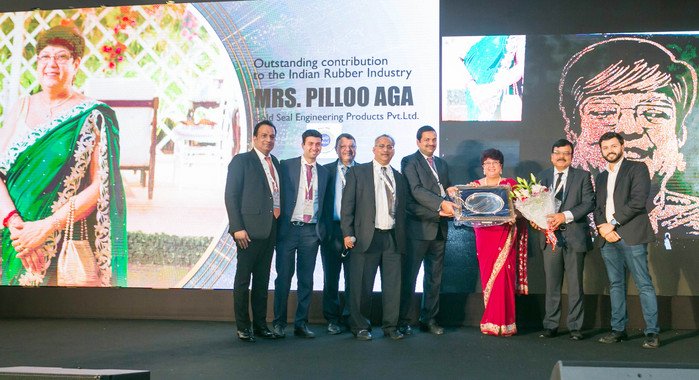WHAT THE FORK: KUNAL VIJAYAKAR CELEBRATES NAVROZ WITH A MOUTH-WATERING PARSI MENU
It’s going to be a different Navroz for the Parsis this year. There will be no visiting friends and doing excessive “kissi-koti” (kissing andhugging), there will be a much lesser crowd at the Agiary (fire temple), there will be no evening dinners at Chinese restaurants and unfortunately, there will be no evening at the National Centre for the Performing Arts, watching a Parsi Natak, the inevitable, farcical Parsi-Gujarati play with lots of buffoonery, performed by octogenarian veterans. The lockdown has seen to that. But what there will be is food.
This week is Navroz, an important day for the Parsi community. It’s the New Year. I’ve often been called a wannabe Parsi. I can’t help myself. Most of my friends are Parsi, and since childhood, I have spent impossibly prolonged days relishing life, food and drink with them. It’s a bright, blithesome and boisterous community that has welcomed me with open arms into their homes and especially into their kitchens.
The Parsis are a blessed bunch and their meals form a large part of their lives. Only at a Parsi dining table can you finish eating breakfast and discuss lunch, finish eating lunch and discuss tea, finish eating tea and discuss dinner, and finish eating dinner and discuss the menu for the next week. And this gastronomical fervour and amore reflects in their cuisine. It’s hearty, hefty, plenteous cuisine that embraces lots of meat, fish, eggs and robust spices. As you may know, today’s Parsis have descended from Persian Zoroastrians who emigrated to India around 1,300 years ago, to avoid religious persecution by invading Muslims rulers. Once settled, the Parsis enthusiastically adopted, adapted, borrowed, improvised and landed up with a distinct cuisine that proudly flaunts Gujarati, Maharashtrian, Iranian and colonial flavours.
As an emblem, a keepsake of their roots from Iran, the Parsis celebrate Navroz. Navroz is derived from ‘nav’ and ‘roz’, literally meaning new and day, and is the first day of the Zoroastrian/Persian calendar. It’s an auspicious day full of good thoughts, good words, good deeds and… good food. So what better way to celebrate this feast than by talking about the food.
THE NAVROZ MENU
The Navroz day will start with breakfast. Of course, there will be eggs, like an Akuri or spicy Parsi omelette, but there will also be Sev Dahi. Thin vermicelli browned in ghee, topped with nuts and served with sweetened curd.
Lunch will be Dhandaar Patio, which is a sweet and tangy semi-dry preparation of prawns with fried onions served with yellow daal and white rice. Maybe some fried fish alongside. But dinner will be a huge feast. Salli Boti or Salli Jardaloo Margi, which is either mutton or chicken cooked in spicy-sweet gravy with dried apricots and garnished with crisp potato straws. There will also be fish. It could be Patra ni Macchi, whole pomfrets stuffed with spicy-tangy-sweet green chutney, wrapped in banana leaves and steamed with vinegar. But the pièce de résistance is an iconic fish dish, available normally at Parsi weddings and quite tough to produce at home—Saas ni Macchi. A perfect example of a sauce created with the heart of French cooking but the soul of an Indian. Huge slices of pomfret in a sweet-and-sour version of a classic béchamel sauce, with the biting flavour of green chillies and coriander creating a taste of stature and distinction. That done, the Parsi menu is never complete without something fried.
FRIED DELIGHT
I am a big fan of the Margi Na Farcha. Often a whole thigh and drumstick of a large broiler chicken, the chicken is marinated and cooked in a spicy red masala, then rubbed with flour, pandered with bread crumbs, dipped in silky beaten egg and dropped into hot oil. The Chicken Farcha is the mother of Kentucky Fried Chicken. Another popular savoury dish is the cutlet. Colloquially mispronounced and also called a “Cutless”, a cutlet could be of mutton or chicken mince. But what differentiates the Parsi cutlet from any other namesake is the lace. The cutlet is a patty made of ground meat or an unbreaded piece of lamb also called a chop. Once the cutlet is patted down into its oblong shape, it’s breaded and crumbed, then dipped into a mixture of beaten eggs and ice or cold water. When dropped into hot oil, the cold water in the egg explodes, converting the egg batter into a crisp lacy outer coating for the cutlet. Hence the cutlet is called Lacy Cutlet, or in Parsi parlance, Dadhiwala Cutless (bearded cutlet) or Frill na Cutless, (cutlets with frills). And the crowning glory will be the Mutton Pulao Daal. A fragrant mutton biryani-like dish embellished with huge potatoes, fried onions, dry fruit and raisins that is served with a dark, thick and spicy daal.
The meal will end with Lagan nu Custard, or Falooda, a really heavy stomach and an uncontrollable desire to hit the sack. And so before I collapse into bed, let me once again wish all my Parsi friends, Navroz Mubarak!





